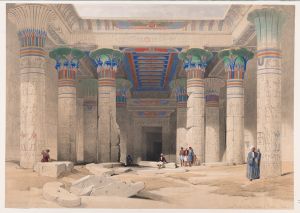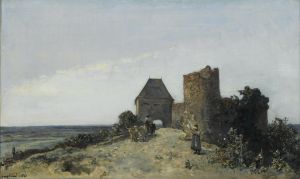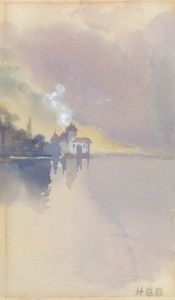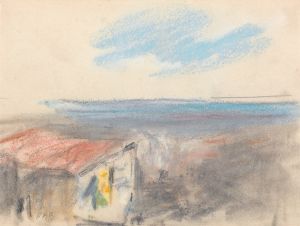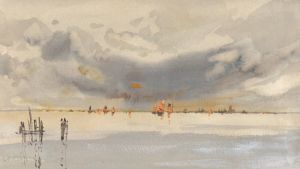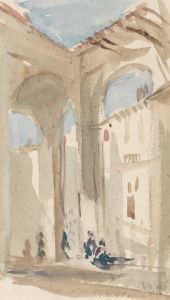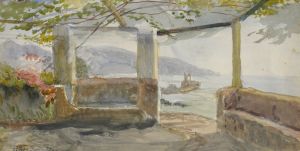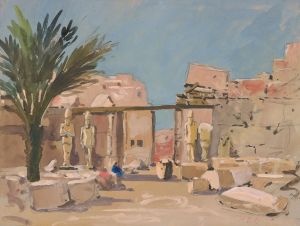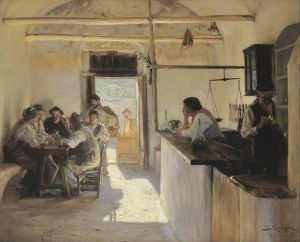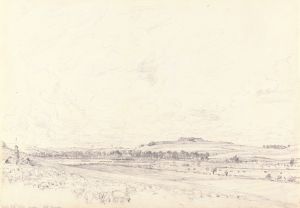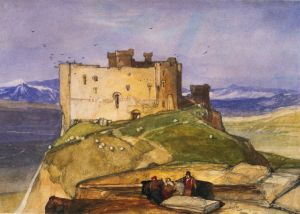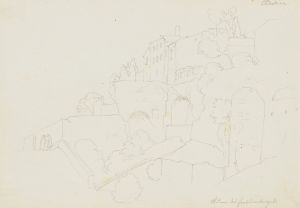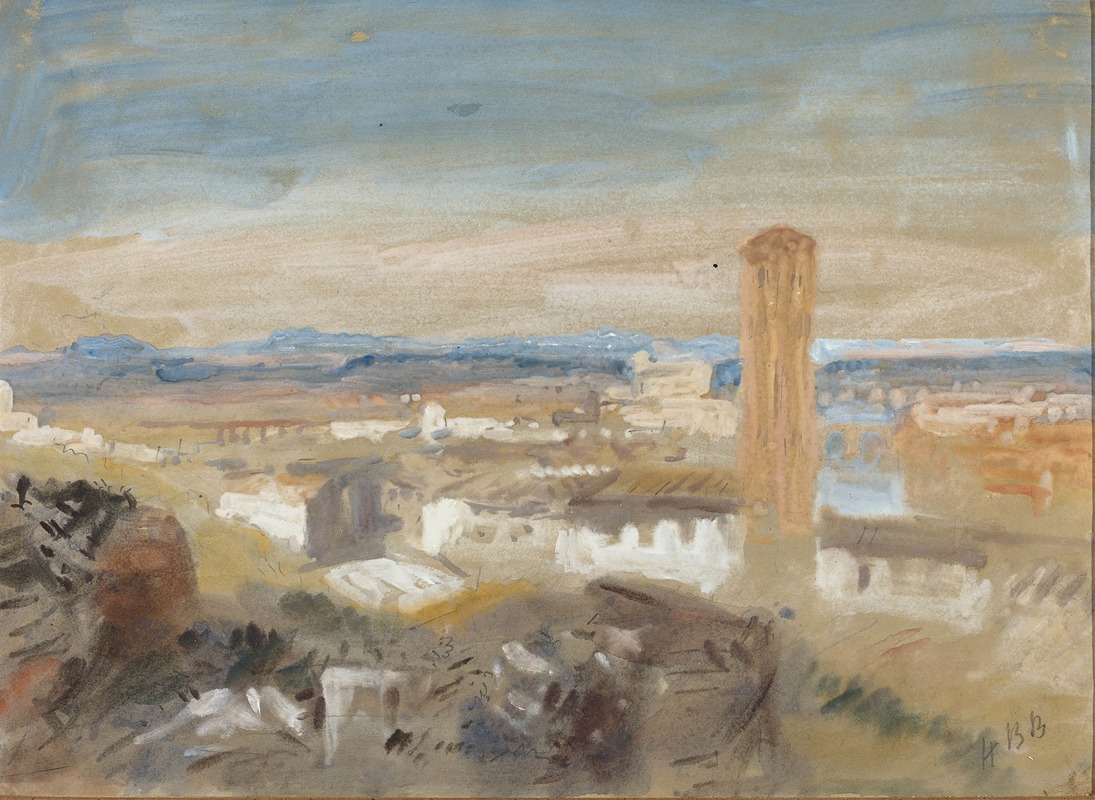
A Campanile among Ruins
A hand-painted replica of Hercules Brabazon Brabazon’s masterpiece A Campanile among Ruins, meticulously crafted by professional artists to capture the true essence of the original. Each piece is created with museum-quality canvas and rare mineral pigments, carefully painted by experienced artists with delicate brushstrokes and rich, layered colors to perfectly recreate the texture of the original artwork. Unlike machine-printed reproductions, this hand-painted version brings the painting to life, infused with the artist’s emotions and skill in every stroke. Whether for personal collection or home decoration, it instantly elevates the artistic atmosphere of any space.
Hercules Brabazon Brabazon (1821–1906) was a British artist known for his distinctive watercolors and his unique approach to capturing landscapes and architectural scenes. One of his works, "A Campanile among Ruins," exemplifies his style and artistic focus. Brabazon was born into a wealthy family and was able to pursue his passion for art without the financial pressures that many of his contemporaries faced. He studied at Harrow School and later at Trinity College, Cambridge, before embarking on a Grand Tour of Europe, which greatly influenced his artistic development.
Brabazon's work is characterized by its loose, impressionistic style, which was somewhat unconventional for his time. He often used a limited color palette and soft washes to create atmospheric effects, focusing on the play of light and shadow. This approach allowed him to capture the essence of a scene rather than its precise details, a technique that was appreciated by his contemporaries and continues to be admired today.
"A Campanile among Ruins" is a watercolor painting that reflects Brabazon's interest in architecture and his ability to convey a sense of place. The painting depicts a campanile, or bell tower, rising above a landscape of ruins. The choice of subject matter suggests a fascination with the passage of time and the remnants of past civilizations, themes that were common in Brabazon's work. The campanile, a typical feature of Italian architecture, indicates that the painting may have been inspired by one of Brabazon's many travels to Italy, a country he visited frequently and whose landscapes and architecture he often depicted in his art.
In this painting, Brabazon employs his signature technique of using soft, flowing brushstrokes and a muted color palette to create a dreamlike quality. The ruins are suggested rather than detailed, with the campanile standing as a solitary, enduring structure amidst the decay. This contrast between the enduring and the ephemeral is a recurring theme in Brabazon's work, reflecting his interest in the transient nature of human creations compared to the timelessness of nature.
Brabazon's work was not widely exhibited during his lifetime, as he preferred to paint for personal enjoyment rather than public acclaim. However, he was well-regarded by those who knew his work, including prominent figures in the art world such as John Ruskin. It was only after his death that his paintings gained broader recognition, with exhibitions showcasing his unique contribution to the watercolor medium.
Today, Brabazon's paintings are appreciated for their beauty and their ability to evoke a sense of nostalgia and contemplation. "A Campanile among Ruins" is a testament to his skill in capturing the essence of a scene and his ability to convey emotion through his art. His work remains an important part of the British watercolor tradition, and his paintings are held in various collections, including the British Museum and the Victoria and Albert Museum.
In summary, "A Campanile among Ruins" by Hercules Brabazon Brabazon is a fine example of the artist's ability to blend architectural interest with a poetic, impressionistic style. Through his use of color and form, Brabazon captures the enduring beauty of architecture amidst the inevitable decay of time, inviting viewers to reflect on the relationship between the past and the present.





